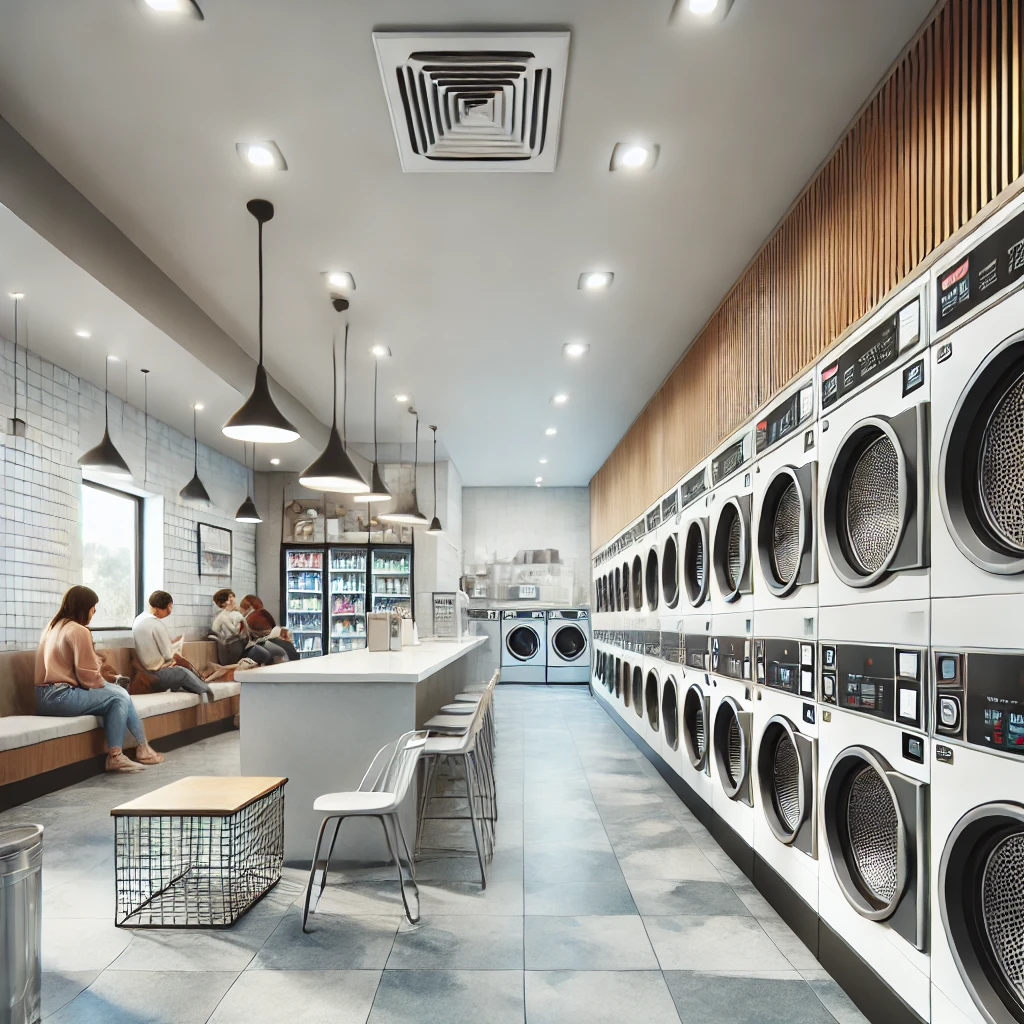Build a clean, efficient operation with smart Laundry Room Management at the core
Managing a laundromat sounds simple: keep the doors open, the machines running, and customers happy. But those who’ve stepped into the business know better. From broken machines and lost items to utility bills and unsupervised shifts, it’s easy to lose control—and profits—without proper systems in place.
At the centre of a successful laundromat is one thing: strong, practical Laundry Room Management.
Whether you’re running a self-serve laundromat, offering wash-and-fold services, or supporting local commercial clients, good management is what turns clean clothes into a clean business model.
Here’s how to do it right.
Start With Systems, Not Gut Instinct
You don’t need to be physically present 24/7 to run a smooth laundromat—but you do need systems that do the thinking for you. A successful operation runs on repeatable routines that your team (or customers) can follow without guessing.
Key systems to establish include:
- Daily open and close checklists (cleaning, float count, safety checks)
- Machine maintenance logs
- Inventory control (detergent, coin bags, packaging supplies)
- Customer issue tracking (lost items, refund requests, repeat complaints)
Whether you’re managing a single location or coordinating offsite pickup and delivery, these systems are the foundation of effective Laundry Room Management.
Keep Equipment Running—and Earning
Downtime is expensive. A machine that’s out of order isn’t just dead space—it’s lost revenue and a potential source of customer frustration.
Good laundromat managers:
- Schedule preventive maintenance
- Rotate usage across machines to reduce uneven wear
- Track performance issues (like repeated coin jams or draining errors)
- Keep spare parts or a service contact on hand
It’s also worth investing in commercial machines with clear diagnostics, allowing you to catch problems before they turn into full shutdowns.
Some operators use software that logs machine use and errors remotely, giving you real-time oversight without stepping foot on-site.
Manage Utilities Like a Pro
Water, gas, and electricity are your biggest ongoing costs. Managing them well has a direct impact on your profit margins.
Smart utility practices include:
- Installing high-efficiency washers and dryers
- Using gas dryers over electric where possible
- Running energy-intensive cycles (like hot washes) during off-peak hours
- Regularly checking for leaks or running water lines
Even small tweaks—like switching to LED lighting or installing auto shut-off taps—can lead to big savings over a year.
According to Energy.gov.au’s tips for small businesses, targeted efficiency upgrades can reduce bills by 10–25%, with payback periods of less than two years.
Build a Clean, Safe, and Friendly Customer Experience
A laundromat isn’t just a utility space—it’s a service environment. Whether self-serve or staffed, the experience you provide will shape whether customers return.
Focus on:
- Clean floors, benches, and bathrooms
- Easy-to-read signage (machine instructions, pricing, contact info)
- Working change machines or card systems
- Safe, well-lit entry and exit areas
- Fast responses to customer queries (email, SMS, or in-person)
Even unattended laundromats benefit from a “managed” feel. That means visible rules, service contact details, and staff visits at scheduled times for cleaning and checks.
All of this flows directly from good Laundry Room Management.
Staff the Right Way—Even If It’s Just You
If your laundromat offers full-service options like wash-and-fold or ironing, then staffing becomes part of your daily management load.
Key considerations:
- Clear task breakdowns (e.g. sorting, stain-checking, folding, delivery prep)
- Set shift patterns that match service demand
- Use SOPs to keep quality consistent
- Rotate staff across duties to avoid fatigue or boredom
Even if you’re solo-running the operation, these habits help you stay efficient and prep you for hiring down the track.
If you’re supporting external clients—such as fitness studios, short-stay hosts, or clinics—your staff may also be involved in pickups, sorting, and managing larger volumes. In these cases, route and load coordination becomes a core part of your Laundry Room Management framework.
Expand With Caution, Not Chaos
Thinking of adding a delivery route or servicing commercial clients from your laundromat base? That’s a great way to increase revenue—but only if your systems are strong enough to handle the added load.
Questions to answer before expanding:
- Can your current machines handle the extra cycles?
- Do you have space for sorting and folding larger volumes?
- Is your team ready for the change—or will you need to hire?
- How will you track client orders and deadlines?
Using colour-coded bins, route sheets, or basic delivery management software can help you scale without dropping the ball.
Start small with one or two clients, build repeatable systems, then scale at a pace that keeps your service consistent.
Keep Track of Key Metrics
To truly manage your laundromat, you need to understand its numbers. That doesn’t mean drowning in spreadsheets—but it does mean tracking performance over time.
Useful data includes:
- Average daily revenue
- Machine usage rates (by hour or day)
- Maintenance costs (repairs and consumables)
- Water/gas/electricity use over time
- Customer complaints or refunds issued
Keeping tabs on these figures helps you identify what’s working, what’s dragging profits down, and where you can improve.
Final Wrap: Consistency Is Your Competitive Edge
Running a laundromat isn’t about chasing gimmicks. It’s about doing the basics better than anyone else. Machines that work. Clean floors. Predictable service. Smart use of time and resources.
That kind of reliability doesn’t happen by luck—it happens through structured, thoughtful Laundry Room Management.
If you’re looking to grow your customer base, improve daily operations, or branch into commercial servicing, it all starts with better control behind the scenes. Build systems that scale, fix problems early, and deliver the kind of experience customers actually remember.
Start with structure—and success will follow.

